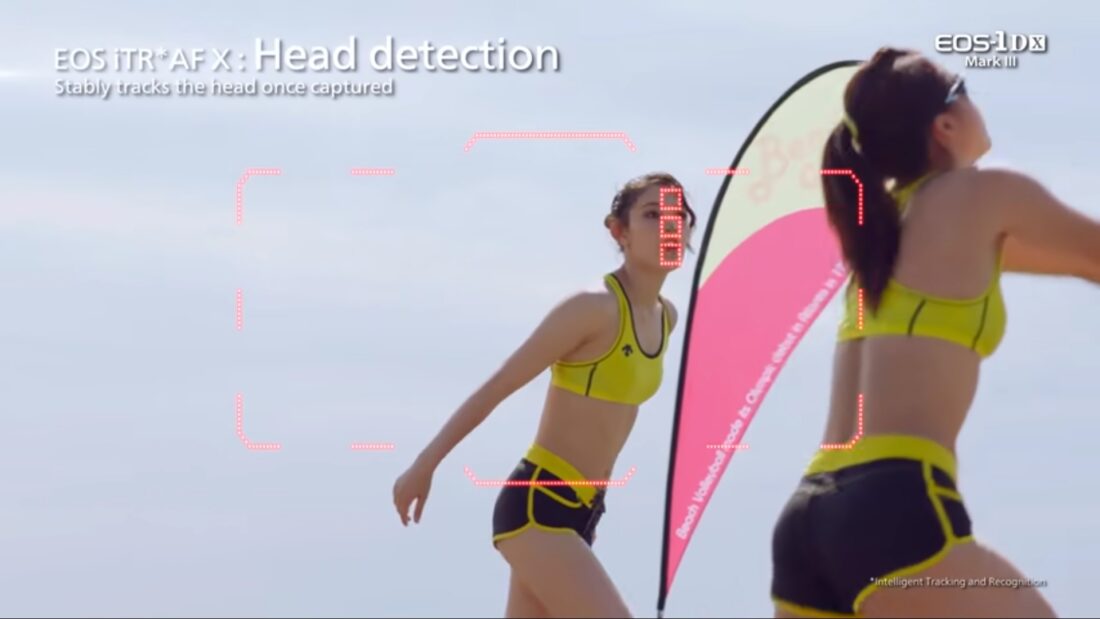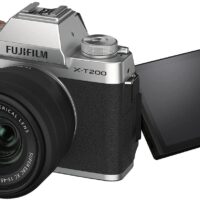DSLR and mirrorless cameras are still in a fight for the throne to prove which one can do best. One of the reasons why DSLR can still keep pace in this race is because of Canon.
Canon is one of the leading brands in the DSLR field due to its aggressive advancement of technology. One of the things to thank for this is the brand’s famous Dual Pixel CMOS AF technology which resolves the old issue about fast autofocus in Live View of DSLR units. This is proven a lot of times in various Canon DSLRs. Yet, Canon never fails to impress us with newer technologies such as the EOS iTR AFX or the Deep Learning AF. It is available in EOS-1D X Mark III which has the power of the new Digic X processor. It uses a better algorithm in analyzing the subject, allowing it to recognize the human body (especially the head) efficiently and at a breakneck speed.
Nonetheless, it is also important to check on the other basic, yet crucial attributes we love about DSLR models such as the grip and chunky body, long battery life, and optical viewfinders. And not forget about the price tags! Given how much a DSLR could cost, it can be really enticing to find a unit that can offer you incredible features such as the Rebel SL3: an affordable, beginner-friendly camera.
To give you better sets of choices, we collected the best Canon DSLR cameras on the market. Together with the aid of Solidsmack Photography Editor, Evangeline Summers, we tested and compared each one of them to give you the best highlights possible. This should allow you to easily identify the model that complements your abilities and needs. Let’s have a better look at each of them...
Best Canon DSLR Cameras Comparison & Rating
Canon DSLR Cameras | Features |
1. Canon EOS-1D X Mark III





Of all the other Canon DSLR we reviewed, EOS-1D X Mark III is probably one of those that has the right (if not perfect) balance between things. It doesn’t have that boastful resolution but it comes with a full-frame sensor. On the other hand, while it can deliver full-frame 4K/60p videos and 5.5K RAW, it doesn’t compromise the quality of the stills. As for the speed, you’ll fall in love.
“Besides being a piece of perfect video equipment due to its uncropped 4K,” started Summers, “it can also excel in stills due to its incredible continuous shooting ability that can reach up to 20 frames per second. As for the buffer, EOS-1D X Mark III breaks the record. It uses dual CFexpress cards which can cater to up to 1,000 RAW and JPEG files. Because of this, it is no wonder why it’s a famous choice among sports photographers.”
Due to this, Summers said that EOS-1D X Mark III can tackle almost all kinds of fast-moving subjects. It could even be a great wildlife camera, only if it has a designated animal AF. Nonetheless, there is nothing to say with the current and general autofocus system of EOS-1D X Mark III. The optical viewfinder utilizes 191 phase-detection AF points with 155 of them being cross-type. There is also the face detect AF to aid you in subject tracking while using the OVF. On the other hand, the Live View uses eye detect AF and Dual Pixel CMOS AF with 3,869 points.
And as if the Digic 8 processor isn’t enough, Canon added the new Digic X processor to further improve the AF system. This grants it the EOS iTR AFX feature or the so-called Deep Learning AF. The result? A more precise, faster, and overwhelming AF system. It is a pretty aggressive technology with an algorithm that can detect human subjects. This is proven true as it can follow the subject’s head regardless of what is concealing it.
On the other hand, while the 20 MP resolution can be quite underwhelming for this model, keep in mind that it is a full-frame sensor. Other options have that generous megapixel resolution but the size of the sensor is even more important. After all, it can deliver sharp details more than you would expect from a 20 MP unit. Even its ISO and dynamic range capabilities are more than we expected.
2. Canon EOS 5D Mark IV





EOS 5D Mark IV just comes with a 7fps burst rate and 21 RAW shots buffer. Plus, there are newer cameras that can dethrone it but why is it here? Summers said: Quality images.
“The 5D Mark IV compensates in terms of the components that contribute to the details of its shots. First of them is the full-frame 30.4 MP sensor which delivers unrivaled details, exposure, saturation, and overall color quality. Even in low-light conditions and high ISO settings, the amount of noise present comes almost unnoticed,” Summers said.
According to Summers, even its dynamic range can promise a good experience in reviving details. With all this, converting the shots into large prints won’t be a concern in EOS 5D Mark IV (especially that its color rendition is immaculate). On the other hand, besides the pleasing resolution and image quality, it can also provide decent performance in speed and precision.
“Even if it just offers a 7fps burst rate, the 5D Mark IV won’t fail to capture subjects with great precision. With its 61-point AF and Dual Pixel AF, it is almost unbelievable how it can get a shot of a fast-moving subject without much blurriness. Even when excessive cropping is applied, you can still get a decent amount of detail which proves how powerful its full-frame sensor is,” Summers added.
Further, of its 61 AF points, you get 5 dual cross-type included in its already impressive 41 cross-type points under f/2.8 aperture. This makes the AF system extremely pleasing that even at the worst low-light scenarios, the focusing function remains honest. This, we bet, would definitely attract not just wildlife photographers, but others as well… if its fixed LCD, buffer, and cropped 4K won’t bother them.
3. Canon EOS 6D Mark II





Canon EOS 6D Mark II is the successor of the original 6D which is also a full-frame model. It might sound tempting seeing a full-frame DSLR but with the number of years it took Canon to release Mark II, we were expecting more from it. Yet, it still makes the cut to prove itself worthy in this category.
According to Summers, it has a full-frame sensor just like its predecessor but its resolution has been elevated to 26 megapixels. It is compelling enough, but there are also other sections that get improvements. This includes the ISO that now comes at 100 - 40000 (6D offers ISO 100 - 25600) and the burst which is now 2fps higher than what 6D offers.
On the other hand, there is a huge difference in the focus points of EOS 6D and EOS 6D Mark II. From the original’s 11 focus points (with 1 cross-type), Mark II now boasts 45 focus points which are all cross-type. To aid with this, Canon fashioned 6D Mark II with a newer processor (DIGIC 7), making it more responsive and better in low-light conditions.
And while the viewfinder coverage is just expanded 1% wider (EOS 6D has 97% coverage), we really appreciate that Canon listened to our gripe about a fixed screen!
“Finally, EOS 6D Mark II now offers a fully articulated LCD screen where you can better execute the Dual Pixel CMOS AF in Live View mode,” said Summers. “Even better, the camera has a better battery life and can now have 110 more shots. There are even additional features included that its predecessor can’t offer. Some of them include the timelapse recording, NFC and Bluetooth connection, digital video stabilization, UHS card support, and anti-flicker ability.”
However, despite all the numerous updates, it is still a bit of a disappointment that it doesn’t shoot 4K videos. For the price difference between 6D Mark II and its predecessor, anyone would expect a full bombastic update even in this section; yet, Mark II is still stuck with this. Guess, we still have to wait for it in the future.
4. Canon EOS 90D





Canon has proved its dominance with the release of the Canon EOS 90D DSLR. It is packed with very irresistible features that are unique in this model. Besides the traditional chunky body giving you a solid grip (and sufficient space for buttons!), it goes beyond the limits of DSLR units in the past: the Live View with an effective AF, thanks to Canon’s Dual Pixel CMOS AF technology. This somehow makes it an amalgamation of a mirrorless and DSLR unit.
“This is one of the notably bold moves by Canon which used to be a unique attribute in mirrorless units. Now, EOS 90D blurs the line as it can be as effective as mirrorless models in the video category. This is very true, especially now that you can get uncropped 4K videos with EOS 90D which used to be an issue with most old DSLR models out there. Plus, it now offers headphones and a mic socket. This is a bit interesting as you rarely see a DSLR that invests a lot of features for the videography section,” said Summers.
According to Summers, EOS 90D is filled with more than 5,000 manually selectable AF points. Further, the AF area coverage of EOS 90D is also quite vast with its vertical length fully covered and the horizontal length at 88%. With this, getting the focus on the subject is much easier.
“The touch shutter ability of the EOS 90D is one of its winsome features where you could enjoy the AF system to the fullest. As soon as your fingertip lands on a specific area, the response from the system happens in a snap. This makes the Live Viewing function of the unit very impressive and unforgettable,” she added.
Summers also mentioned that the camera is capable of high-speed continuous shooting that can go up to 10fps in the viewfinder and up to 11fps in the Live View. The buffer is not the best but for enthusiasts, this should be an absolute winning deal.
5. Canon EOS Rebel SL3 / EOS 250D




Rebel SL3 or EOS 250D in other places is the successor of the famous Rebel SL2 which was widely cherished by a lot of photography professionals back then. It is not really designed to be that ‘powerful’ DSLR for pros. It comes with just a 9-point viewfinder AF and a burst at 5fps (though still pretty decent). Yet, according to Summers, there are sections of Rebel SL3 that uplift these flaws which make it an ideal option for beginners and enthusiasts.
It has a 3” vari-angle screen where you can use the Live View option of the camera. The good thing about this is that it employs Canon’s famous Dual Pixel CMOS AF system. Due to the 3,975 selectable AF points that are well distributed across the frame, locking the focus to the subject on the screen with just a tap is possible (not to mention how efficiently it follows the subject’s actions). Thankfully, Rebel SL3’s response is truly unbeatable so setting up the focus is somewhat enjoyable.
As for the performance, Rebel SL3 can challenge other units due to its exquisite detail and color rendition capabilities.
“Its dynamic range is just right; just the right amount of details in dark and bright spots. It is really not something of a deal-breaker since it is comparatively almost the same as the performance of SL2. However, it has a great improvement in the noise control and level even at the highest ISO settings,” said Summers.
Furthermore, Summers said that despite the already great performance of the camera, Canon gave it a few more tweaks to make it more friendly among beginners.
“Besides giving the market a smaller size of DSLR,” Summers added, “you’ll also get other helpful functions that improve user experience. For instance, it introduces a Guided UI, a viewfinder with distinctive autofocus points, and a Creative Assist mode. All of them are targeting novice users. This makes it not just a compact camera, but also a very beginner-friendly unit, as well!”
Lastly, it is one of the cheapest DSLR models that Canon is offering. The good thing about this is that it is reasonably priced. It comes with all the essential functions and appealing performance, making it a wise investment for beginners and pros who are still economically conscious about their purchases.
Best Canon DSLR Cameras - Buyer's Guide
The good thing about DSLRs nowadays is how they can be categorized according to the skills of users. Pros often look for cameras with the most advanced features and technologies. On the other side of the coin, there are cameras specifically fashioned for beginners. They are those with features meant to aid users such as the Guided UI and Creative Assist mode of Rebel SL3. When you’re ready to explore more, you can always use the manual controls and discover more of the functions of the unit.
While it is tempting to see a camera promising high resolution, keep in mind that megapixels aren’t always the basis of a quality shot. The sensor size will always affect the pixel, noise level, low-light performance, and dynamic range.
If you are after the stills, you would probably look for a camera with all the functions focusing on the photography section such as the EOS 6D Mark II. However, if you are after the videos, look for cameras with 4K videos… uncropped 4K videos. If you need both, go for high-end cams like the new Canon EOS-1D X Mark III (but be prepared for the price).
Check for other important features of the DSLR such as the size of the viewfinder, availability of image stabilization, movement of the LCD screen, buffer capacity, number of SD card slots, number of AF points, button layout, and more. Remember to tick the boxes you are looking for in a DSLR to assure you’ll get the best for your needs.
Best Canon DSLR Cameras - FAQs
Canon DSLR cameras employ phase detection, contrast detection, and sometimes both. In the OVFs, phase detection is the main technology being used. Canon also integrated this in its Dual Pixel CMOS AF when shooting in Live View. This gives users a better and faster autofocusing experience in most of its DSLR cameras.
There are 3 types of lenses Canon is offering for their consumer interchangeable lens cameras. These are the EF-S, EF, and EF-M lenses.
The red circle on the lens mount means the camera compliments EF lenses. If there is a red circle and a white square, it means the camera can also use EF-S lenses. Lastly, the white circle means the camera is for EF-M lenses only.





![Canon DSLR Camera [EOS 90D] with Built-in Wi-Fi, Bluetooth, DIGIC 8 Image Processor, 4K Video, Dual Pixel CMOS AF, and 3.0 Inch Vari-Angle Touch LCD Screen, [Body Only], Black Canon DSLR Camera [EOS 90D] with Built-in Wi-Fi, Bluetooth, DIGIC 8 Image Processor, 4K Video, Dual Pixel CMOS AF, and 3.0 Inch Vari-Angle Touch LCD Screen, [Body Only], Black](https://m.media-amazon.com/images/I/41LPfS9ugNL._SL500_.jpg)





